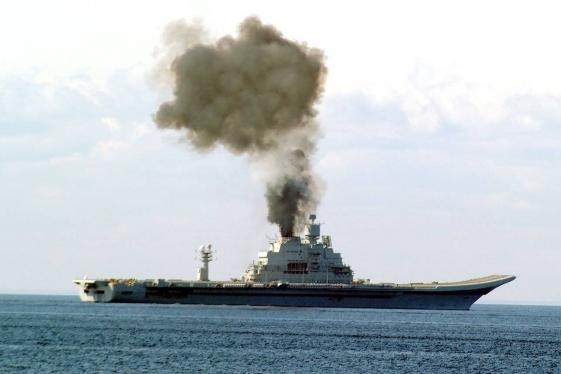Throughout the twentieth century, aircraft-carrying ships were a symbol of aggression, which does not always turn into a military conflict and sometimes consists in a demonstration of power. So a street robber, holding a heavy crowbar in his right hand and a brick in his left, politely offers to buy the latter for a round sum.
The maintenance of powerful naval forces is not affordable for poor states. The cost of an aircraft carrier today in comparable prices is $ 10-15 billion, and its construction entails additional budgetary costs to maintain technical condition and combat readiness, annually comparable to this amount. No wonder they say that the best way to ruin an enemy is to give him a powerful warship.
Successful military operations are extremely difficult without air supremacy. The wars of the post-war decades (Korea, Vietnam, Falklands) could not do without floating airbases plying near the focus of the conflict, ensuring the presence in the airspace of hundreds of aircraft.
Disputes about how necessary Russian aircraft carriers have been going on since Soviet times. Opponents in them are divided into two main groups, conditionally called "pigeons" and "hawks." The former advocate the principle of sufficiency, that is, minimize military spending, and the latter advocate an adequate and almost symmetrical response to any challenge.

The Soviet economy in its effectiveness could not stand the competition with the production capacities of its main competitor, the United States, so the construction of a dozen nuclear aircraft carriers did not take place. In the 70s, each of these aircraft carriers cost about $ 1 billion to American taxpayers. Nevertheless, during the 80s in Nikolaev heavy cruisers “Varyag” and “Tbilisi” were laid down, capable of receiving fifty modern multi-purpose supersonic aircraft on their flight decks, not inferior in technical characteristics to the Hornets and F-16, not to mention the Tomcat and Phantom. After the collapse of the USSR, the question arose of whether these aircraft carriers were needed in Russia and, in general, what to do with them.
A Solomon decision was made. The command of the Black Sea Fleet , which went into operation, managed to transfer the command of the Black Sea Fleet to the Northern Fleet, where it successfully carries out combat service under the name Admiral Kuznetsov, and the unfinished Varyag remained rusted at the Nikolaev shipyards until it was sold to China at the price of scrap metal.
The devastation and complete economic decline of the nineties led Western analysts to the idea that Russia would no longer be able to claim the role of a superpower. The scenario of the division of the country and the establishment of complete control over it seemed quite possible. However, at some point, things went wrong. What’s called, they overlooked ...
Having paid off foreign debts and drawing conclusions about the danger of a disregard for security using the example of other states, the country's leadership began to strengthen its defense capabilities, without leaving the Russian Navy unattended. The aircraft carriers were not going to build at the first stage, emphasizing the main striking force - the submarine fleet.
Meanwhile, the military doctrines of many states have changed significantly. China and India - countries that no one can reproach for neocolonialism - nevertheless, began to make efforts to create their own full-fledged fleets with air support. Italy and Spain also got, albeit small, but aircraft carriers. France possesses a full-fledged ship of this class, moreover, with a nuclear power plant. Why do we need such weapons for countries that do not seek military seizure of foreign territories and can Russian aircraft carriers be needed?
The question is rather rhetorical. It is difficult to exert military pressure on the union state far from our shores if Russian carriers appear on its shores. In addition to maintaining military parity, any superpower has economic interests, the need to uphold which may arise in those regions that information portals today do not remember. Possessing a full-fledged fleet capable of solving any combat missions at remote locations is not only a matter of national prestige and military necessity, but also economic feasibility.
Most likely, the Russian Navy will receive new aircraft carriers, but one should not expect this event in the next decade. A ship of this class is not only expensive in itself, it needs the appropriate infrastructure. Most likely, full-fledged aircraft-carrying ships with a nuclear power plant, displacement of over 100 thousand tons, almost unlimited range and long-term autonomy will be built. Perhaps they will be fewer than the United States, but it is enough that the allies of Russia are not afraid of anyone.